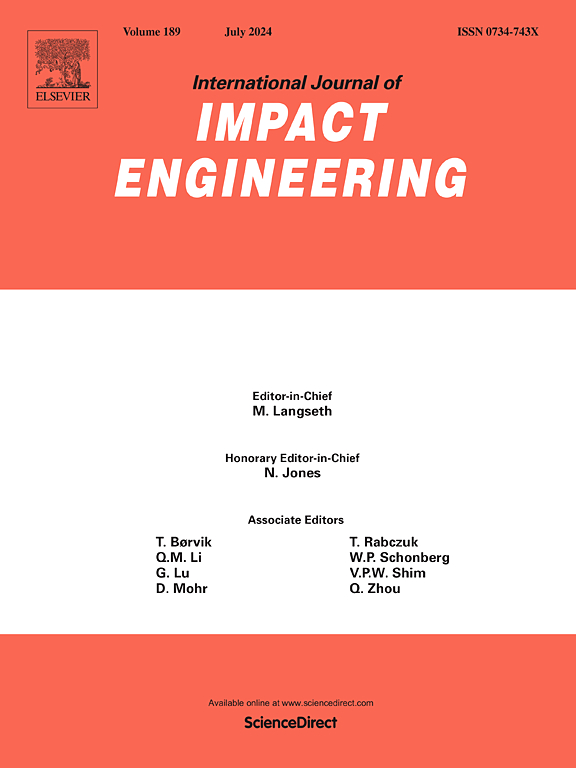层理对脆性变形的影响:片麻岩超高速冲击实验结果
IF 5.1
2区 工程技术
Q1 ENGINEERING, MECHANICAL
International Journal of Impact Engineering
Pub Date : 2025-05-30
DOI:10.1016/j.ijimpeng.2025.105406
引用次数: 0
摘要
本研究探讨了在爆破和超高速冲击等高应变率事件中,晶粒尺寸、矿物学和普遍分层对脆性变形的影响。进行了两次超高速(6.9和7.2 km/s)撞击实验。研究结果表明,层状结构对撞击坑地下冲击波导致的脆性损伤有显著影响。例如,垂直分层导致的损伤更深、范围更广,而水平分层增加了靠近陨石坑表面的裂缝密度,降低了陨石坑地下的裂缝强度。这些地下损伤变化和裂缝分布决定了最终的火山口形态和热液活动。我们的观察结果与最近对印度洛纳尔陨石坑的研究结果非常吻合。实验进一步揭示了黑云母和长石颗粒破碎的显著差异,表明较弱的黑云母层可以屏蔽较强的长石层免受冲击波的影响。这些发现强调了在极端条件下预测岩石力学行为时,层向和较弱层的存在的重要性,这对包括采矿、建筑和行星科学在内的各个领域都有影响。本文章由计算机程序翻译,如有差异,请以英文原文为准。
Effect of layering on brittle deformation: results from hypervelocity impact experiments on gneiss
This study explores the effects of grain size, mineralogy, and pervasive layering on brittle deformation during high-strain rate events such as blasting and hypervelocity impact. Two hypervelocity (6.9 and 7.2 km/s) impact experiments were carried out. The findings reveal that the layering significantly affects shock wave led brittle damage in the subsurface of the crater. For example, vertical layering results in deeper and more widespread damage, while horizontal layering increases the density of fractures close to the crater surface and decreases the fracture intensity in the subsurface of the crater. These subsurface damage variations and fracture distributions dictate the final crater morphology and hydrothermal activity. Our observations agree well with a recent study on the Lonar crater, India. The experiments further reveal significant differences between the fracturing of biotite and feldspar grains, suggesting that weaker biotite layers can shield stronger feldspar layers from shock waves. These findings underscore the importance of layer orientation and the presence of weaker layers when predicting the mechanical behavior of rocks under extreme conditions, which has implications for various fields, including mining, construction, and planetary science.
求助全文
通过发布文献求助,成功后即可免费获取论文全文。
去求助
来源期刊

International Journal of Impact Engineering
工程技术-工程:机械
CiteScore
8.70
自引率
13.70%
发文量
241
审稿时长
52 days
期刊介绍:
The International Journal of Impact Engineering, established in 1983 publishes original research findings related to the response of structures, components and materials subjected to impact, blast and high-rate loading. Areas relevant to the journal encompass the following general topics and those associated with them:
-Behaviour and failure of structures and materials under impact and blast loading
-Systems for protection and absorption of impact and blast loading
-Terminal ballistics
-Dynamic behaviour and failure of materials including plasticity and fracture
-Stress waves
-Structural crashworthiness
-High-rate mechanical and forming processes
-Impact, blast and high-rate loading/measurement techniques and their applications
 求助内容:
求助内容: 应助结果提醒方式:
应助结果提醒方式:


